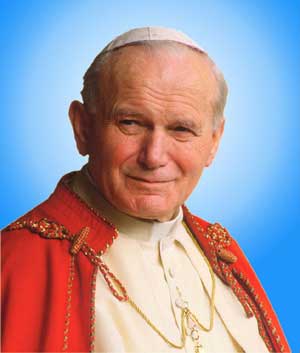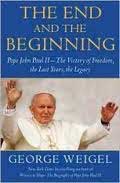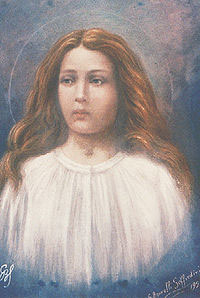
 MESSAGE OF JOHN PAUL II TO THE BISHOP OF ALBANO FOR THE CENTENARY OF THE DEATH OF ST. MARIA GORETTI from Vatican.va
MESSAGE OF JOHN PAUL II TO THE BISHOP OF ALBANO FOR THE CENTENARY OF THE DEATH OF ST. MARIA GORETTI from Vatican.va
To my Venerable Brother Bishop Agostino Vallini of Albano
1. A hundred years ago, on 6 July 1902, Maria Goretti died in the hospital at Nettuno, brutally stabbed the day before in the little village of Le Ferriere, in the Pontine Marshes. Her spiritual life, the strength of her faith, her ability to forgive her murderer have placed her among the best-loved saints of the 20th century. Appropriately, therefore, the Congregation of the Passion (C.P.), entrusted with the care of the shrine where the saint’s remains repose, wanted to celebrate the anniversary with special solemnity.
St Maria Goretti was a girl whom God’s Spirit endowed with the courage to stay faithful to her Christian vocation even to the point of making the supreme sacrifice of her life. Her tender age, her lack of education and the poverty of the environment in which she lived did not prevent grace from working its miracles in her. Indeed, it was precisely in these conditions that God’s special love for the lowly appeared. We are reminded of the words with which Jesus blesses the heavenly Father for revealing himself to children and the simple, rather than to the wise and learned of the world (cf. Mt 11,25).
It was rightly observed that St Maria Goretti’s martyrdom heralded what was to be known as the century of martyrs. It was in this perspective that at the end of the Great Jubilee of the Year 2000, I stressed that “this lively sense of repentance … has not prevented us from giving glory to the Lord for what he has done in every century, and in particular during the century which we have just left behind, by granting his Church a great host of saints and martyrs” (Novo Millennio ineunte, n. 7).
2. Maria Goretti, born in Corinaldo in The Marches on 16 October 1890, was soon obliged to emigrate with her family, and after sometime they arrived at Le Ferriere di Conca in the Pontine Marshes. Despite the hardships of poverty which even prevented her from going to school, little Maria lived in a serene and united family atmosphere, enlivened by Christian faith, in which the children felt welcomed as a gift and were taught by their parents self-respect and respect for others, as well as a sense of duty based on love of God. This enabled the little girl to grow up peacefully, nourishing her simple but deep faith. The Church has always recognized the role of the family as the first and fundamental place for the sanctification of its members, starting with the children.
In this family environment Maria assimilated steadfast trust in God’s provident love, which she showed in particular at the death of her father, who died of malaria. “Mother, be brave, God will help us”, the little girl was in the habit of saying in those difficult times, bravely reacting to her deep feeling of loss at her father’s death.
3. In the homily for her canonization, Pope Pius XII of venerable memory pointed to Maria Goretti as “the sweet little martyr of purity” (cf. Discorsi e Radiomessaggi, XII [1950-1951], 121), because she did not break God’s commandment in spite of being threatened by death.
What a shining example for young people! The non-commital mindset of much of our society and culture today sometimes has a struggle to understand the beauty and value of chastity. A high and noble perception of dignity, her own and that of others emerges from the behaviour of this young saint, was mirrored in her daily choices, giving them the fullness of human meaning. Is not there a very timely lesson in this? In a culture that idolizes the physical aspect of the relations between a man and a woman, the Church continues to defend and to champion the value of sexuality as a factor that involves every aspect of the person and must therefore be lived with an interior attitude of freedom and reciprocal respect, in the light of God’s original plan. With this outlook, a person discovers he or she is being given a gift and is called, in turn, to be a gift to the other. (more…)
Tags: catholic, catholic podcast, catholic prayer, cathollc spirituality, Church, forgiveness, Le Ferriere, Maria Goretti, pope john paul ii, saints, st. maria goretti
This entry was posted on Friday, July 6th, 2012 at 12:07 am
You can follow any responses to this entry through the RSS 2.0 feed.
Here is Pope Benedict XVI’s homily for the Mass of beatification:
Dear Brothers and Sisters,
Six years ago we gathered in this Square to celebrate the funeral of Pope John Paul II. Our grief at his loss was deep, but even greater was our sense of an immense grace which embraced Rome and the whole world: a grace which was in some way the fruit of my beloved predecessor’s entire life, and especially of his witness in suffering. Even then we perceived the fragrance of his sanctity, and in any number of ways God’s People showed their veneration for him. For this reason, with all due respect for the Church’s canonical norms, I wanted his cause of beatification to move forward with reasonable haste. And now the longed-for day has come; it came quickly because this is what was pleasing to the Lord: John Paul II is blessed!….
Today is the Second Sunday of Easter, which Blessed John Paul II entitled Divine Mercy Sunday. The date was chosen for today’s celebration because, in God’s providence, my predecessor died on the vigil of this feast. Today is also the first day of May, Mary’s month, and the liturgical memorial of Saint Joseph the Worker. All these elements serve to enrich our prayer, they help us in our pilgrimage through time and space; but in heaven a very different celebration is taking place among the angels and saints! Even so, God is but one, and one too is Christ the Lord, who like a bridge joins earth to heaven. At this moment we feel closer than ever, sharing as it were in the liturgy of heaven.
….
Dear brothers and sisters, today our eyes behold, in the full spiritual light of the Risen Christ, the beloved and revered figure of John Paul II. Today his name is added to the host of those whom he proclaimed saints and blesseds during the almost twenty-seven years of his pontificate, thereby forcefully emphasizing the universal vocation to the heights of the Christian life, to holiness, taught by the conciliar Constitution on the Church Lumen Gentium. All of us, as members of the people of God – bishops, priests, deacons, laity, men and women religious – are making our pilgrim way to the heavenly homeland where the Virgin Mary has preceded us, associated as she was in a unique and perfect way to the mystery of Christ and the Church. Karol WojtyÅ‚a took part in the Second Vatican Council, first as an auxiliary Bishop and then as Archbishop of Kraków. He was fully aware that the Council’s decision to devote the last chapter of its Constitution on the Church to Mary meant that the Mother of the Redeemer is held up as an image and model of holiness for every Christian and for the entire Church. This was the theological vision which Blessed John Paul II discovered as a young man and subsequently maintained and deepened throughout his life. A vision which is expressed in the scriptural image of the crucified Christ with Mary, his Mother, at his side.This icon from the Gospel of John (19:25-27) was taken up in the episcopal and later the papal coat-of-
arms of Karol WojtyÅ‚a: a golden cross with the letter “M” on the lower right and the motto “Totus tuus”, drawn from the well-known words of Saint Louis Marie Grignion de Montfort in which Karol WojtyÅ‚a found a guiding light for his life: “Totus tuus ego sum et omnia mea tua sunt. Accipio te in mea omnia. Praebe mihi cor tuum, Maria – I belong entirely to you, and all that I have is yours. I take you for my all. O Mary, give me your heart” (Treatise on True Devotion to the Blessed Virgin, 266).
In his Testament, the new Blessed wrote: “When, on 16 October 1978, the Conclave of Cardinals chose John Paul II, the Primate of Poland, Cardinal Stefan WyszyÅ„ski, said to me: ‘The task of the new Pope will be to lead the Church into the Third Millennium'”. And the Pope added: “I would like once again to express my gratitude to the Holy Spirit for the great gift of the Second Vatican Council, to which, together with the whole Church – and especially with the whole episcopate – I feel indebted. I am convinced that it will long be granted to the new generations to draw from the treasures that this Council of the twentieth century has lavished upon us. As a Bishop who took part in the Council from the first to the last day, I desire to entrust this great patrimony to all who are and will be called in the future to put it into practice. For my part, I thank the Eternal Shepherd, who has enabled me to serve this very great cause in the course of all the years of my Pontificate”. And what is this “cause”? It is the same one that John Paul II presented during his first solemn Mass in Saint Peter’s Square in the unforgettable words: “Do not be afraid! Open, open wide the doors to Christ!”
What the newly-elected Pope asked of everyone, he was himself the first to do: society, culture, political and economic systems he opened up to Christ, turning back with the strength of a titan – a strength which came to him from God – a tide which appeared irreversible. By his witness of faith, love and apostolic courage, accompanied by great human charisma, this exemplary son of Poland helped believers throughout the world not to be afraid to be called Christian, to belong to the Church, to speak of the Gospel. In a word: he helped us not to fear the truth, because truth is the guarantee of liberty. To put it even more succinctly: he gave us the strength to believe in Christ, because Christ is Redemptor hominis, the Redeemer of man. This was the theme of his first encyclical, and the thread which runs though all the others.
When Karol WojtyÅ‚a ascended to the throne of Peter, he brought with him a deep understanding of the difference between Marxism and Christianity, based on their respective visions of man. This was his message: man is the way of the Church, and Christ is the way of man. With this message, which is the great legacy of the Second Vatican Council and of its “helmsman”, the Servant of God Pope Paul VI, John Paul II led the People of God across the threshold of the Third Millennium, which thanks to Christ he was able to call “the threshold of hope”. Throughout the long journey of preparation for the great Jubilee he directed Christianity once again to the future, the future of God, which transcends history while nonetheless directly affecting it. He rightly reclaimed for Christianity that impulse of hope which had in some sense faltered before Marxism and the ideology of progress. He restored to Christianity its true face as a religion of hope, to be lived in history in an “Advent” spirit, in a personal and communitarian existence directed to Christ, the fullness of humanity and the fulfillment of all our longings for justice and peace.
Finally, on a more personal note, I would like to thank God for the gift of having worked for many years with Blessed Pope
John Paul II. I had known him earlier and had esteemed him, but for twenty-three years, beginning in 1982 after he called me to Rome to be Prefect of the Congregation for the Doctrine of the Faith, I was at his side and came to revere him all the more. My own service was sustained by his spiritual depth and by the richness of his insights. His example of prayer continually impressed and edified me: he remained deeply united to God even amid the many demands of his ministry. Then too, there was his witness in suffering: the Lord gradually stripped him of everything, yet he remained ever a “rock”, as Christ desired. His profound humility, grounded in close union with Christ, enabled him to continue to lead the Church and to give to the world a message which became all the more eloquent as his physical strength declined. In this way he lived out in an extraordinary way the vocation of every priest and bishop to become completely one with Jesus, whom he daily receives and offers in the Church.
Blessed are you, beloved Pope John Paul II, because you believed! Continue, we implore you, to sustain from heaven the faith of God’s people. You often blessed us in this Square from the Apostolic Palace: Bless us, Holy Father! Amen.
Tags: catholic, catholic podcast, catholic prayer, cathollc spirituality, pope benedict xvi, pope john paul ii, Second Vatican Council, virgin mary
This entry was posted on Saturday, October 22nd, 2011 at 6:55 am
You can follow any responses to this entry through the RSS 2.0 feed.
Episode 5 – Regnum Novum: Bringing forth the New Evangelization through Catholic Social Teaching with Omar Guiterrez – Value 4 Truth, Freedom, Justice, and Love part 2 “Justice”
– Value 4 Truth, Freedom, Justice, and Love part 2 “Justice”
Discerning Hearts is blessed to present Omar F. A. Guiterrez, M.A. , Special Assistant to Archbishop George Lucas of the Archdiocese of Omaha, in a groundbreaking series which breaks open the heart of Catholic Social Doctrine.
We encourage you to visit “Regnum Novum – A New Kingdom: A Revolution” Omar Guiterrez’s blog site
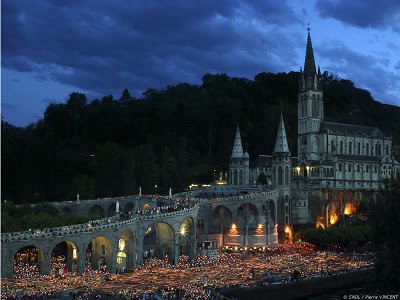 We live at a very special time. The confluence of many things has brought forth the clear need to be able to articulate the Social Teaching of the Catholic Church in a way that is accessible and applicable. This is not to be an effort where high-minded theories are to be bandied about. Rather, this is a time of opportunity wherein we can apply the Social Doctrine to the concrete so as to bring about a New Kingdom, a Revolution. – Omar G. from Regnum Novum
We live at a very special time. The confluence of many things has brought forth the clear need to be able to articulate the Social Teaching of the Catholic Church in a way that is accessible and applicable. This is not to be an effort where high-minded theories are to be bandied about. Rather, this is a time of opportunity wherein we can apply the Social Doctrine to the concrete so as to bring about a New Kingdom, a Revolution. – Omar G. from Regnum Novum
[powerpress]
From episode … 5. Truth, Freedom, Justice, and Love part 2 “Justice”
These are the four values of the Social Teaching of the Catholic Church as they’re enumerated in the Compendium and as they were laid out by, again, Blessed Pope John XXIII in Mater et magistra and Pacem in terris. Without these values, the work of social justice becomes an albatross around our necks. It pulls us down, threatening to poison all the work we do, no matter how well intentioned.
Justice requires we know what is due to our neighbor. But even when justice is achieved, it can be cold and impersonal, as Pope John Paul II said. This is why the phrase “social justice†appears so rarely in the Church’s Social Teaching. Justice is the bare minimum, and we are not looking for the minimum.
(Truth, Freedom and Love are covered in other episodes)
Also visit Omar’s “Discerning Hearts” page Catholic Social Teaching 101
Tags: catholic, catholic podcast, catholic prayer, catholic social doctrine, cathollc spirituality, new evangelization, pope john paul ii, social justice, social teaching of the catholic church
This entry was posted on Monday, February 21st, 2011 at 11:04 am
You can follow any responses to this entry through the RSS 2.0 feed.
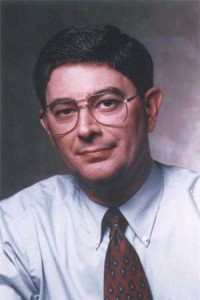 George Weigel give us “The End and The Beginning: Pope John Paul II – The Victory of of Freedom, The Last Years, The Legacy”. What a tremendous blessing to reflect once again on the life of a modern day saint…our very own late great Holy Father, John Paul II. George Weigel doesn’t disappoint. The first part of the book reads like a spy novel…even more compelling because it’s true. The second part, covers the last 6 years of the Pope John Paul’s life, the jubilee and so much more. The last part sets the stage for a legacy which will be reflected and pondered on for generations, if not centuries. It’s as much our story as Church as it is the life of  Pope John Paul II. Don’t miss this one…it is essential reading!!!
George Weigel give us “The End and The Beginning: Pope John Paul II – The Victory of of Freedom, The Last Years, The Legacy”. What a tremendous blessing to reflect once again on the life of a modern day saint…our very own late great Holy Father, John Paul II. George Weigel doesn’t disappoint. The first part of the book reads like a spy novel…even more compelling because it’s true. The second part, covers the last 6 years of the Pope John Paul’s life, the jubilee and so much more. The last part sets the stage for a legacy which will be reflected and pondered on for generations, if not centuries. It’s as much our story as Church as it is the life of  Pope John Paul II. Don’t miss this one…it is essential reading!!!
Visit the Ethic and Public Policy Center for more information
Tags: catholic, catholic podcast, catholic prayer, cathollc spirituality, doubleday religion, ethic and public policy center, george weigel, life of pope john paul ii, pope john paul, pope john paul ii, random house
This entry was posted on Tuesday, September 21st, 2010 at 12:42 am
You can follow any responses to this entry through the RSS 2.0 feed.

